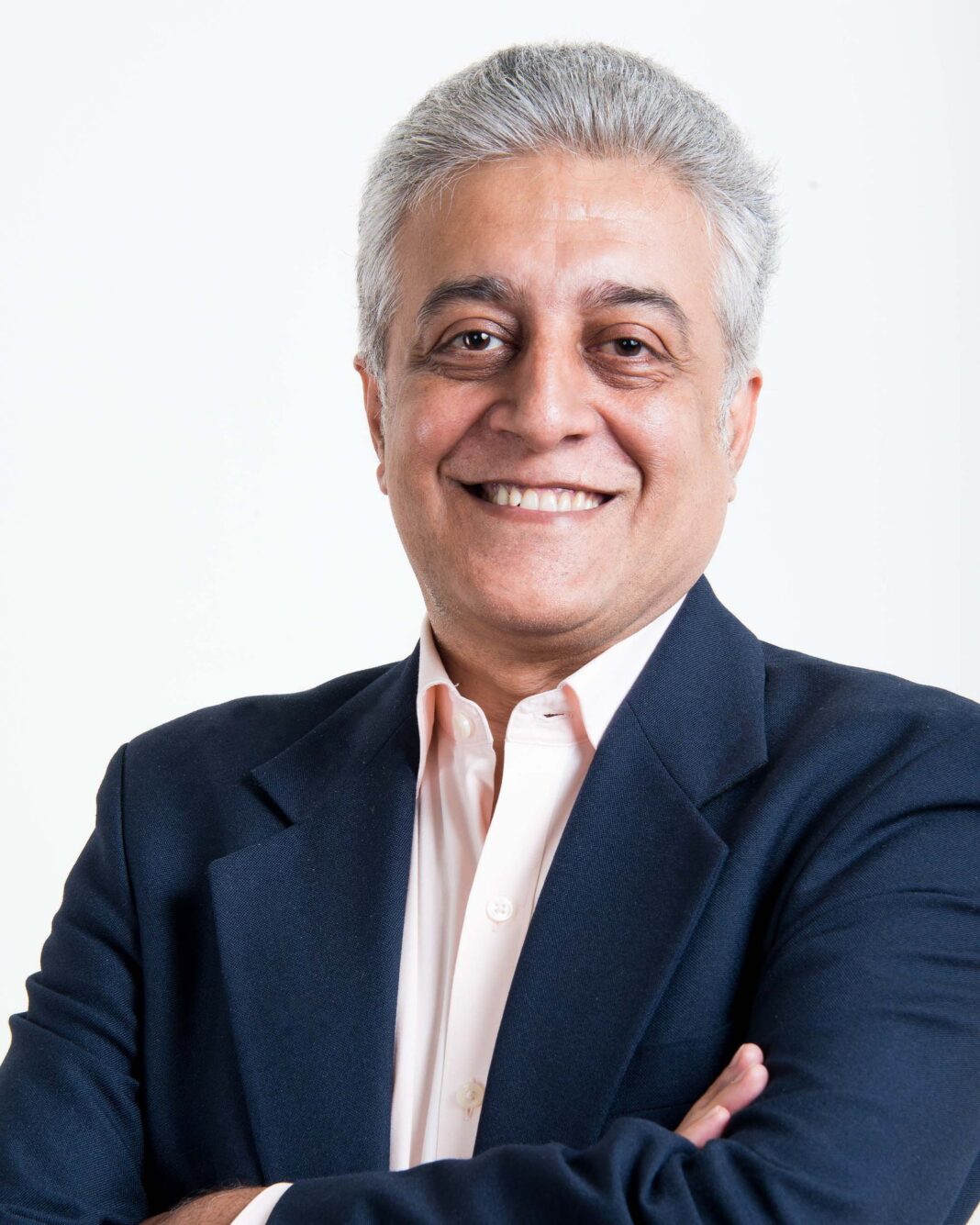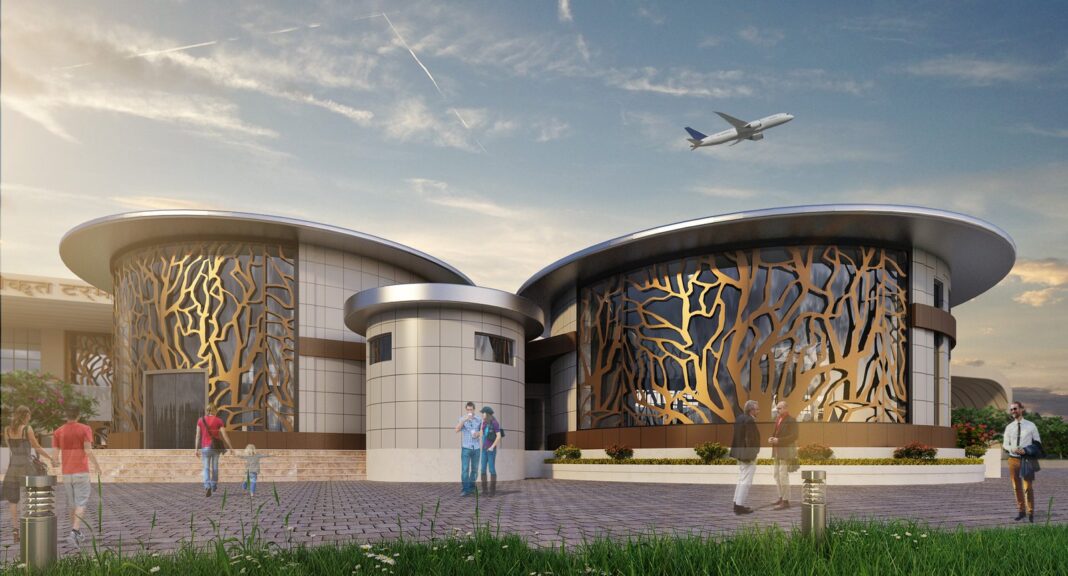The architecture practice not just creates unique structures but ensures that every design of theirs contributes towards a progressive cause in the city. Their architecture designs are in accordance with the city, it is designed for keeping in mind their atmospheric conditions, landscapes and so on. The practice is called to be Venkataramanan Associates…
The man behind this cause-driven ideology and the spearhead of making the firm what is here with us to talk about innovative designs, steel and much more…
Naresh Narasimhan, Principal Architect, Venkatarmanan Associates
Q. Having designed many landmark projects, what is your take on the Indian Construction Industry?
A. As architects, we are living at a time of shifting paradigms. In the past, the scale of our designs grew large, but we were not engaging as many people. Our Indian cities are our biggest concern and designing for this hold utmost importance. Today, we understand the complexity of the issues at play when we design and plan buildings, neighbourhoods, and even entire cities. There is a need for architects to engage in broad conversations with the cityscape.
Being an architect, urbanist, activist, and a core member of the erstwhile Bengaluru Agenda Task Force (BATF) helped me contribute to various progressive causes of the city. One such proposal was the pedestrian-oriented redesign of the city market. Rather than concentrating solely on individual buildings to improve the urban infrastructure, there is a need to enhance the overall quality of living in cities. MOD Institute, an international collective of urban designers, researchers, and curators, has also been responsible for making cities like Bengaluru and the urban processes that drive them, visible and participatory. Our latest urban design intervention, the redevelopment of Church Street, has been a success story in this pursuit.
Q. What all aspects do you consider while designing a project?
A. Although every person seeks to find a higher “meaning” to their work, architects have a unique profession. Part-engineer and part-artist, an architect’s work will produce lasting monuments that will function long after he or she has retired from the profession.
The Five Factors that I try to keep in mind while designing are –
- Physical Requirements
Obviously, building materials must be functional for the intended purpose of the building. Will the material be strong enough to support people and machinery needs? Will it be flexible enough to withstand wind and weather? Will flooring materials be too heavy for the support structure or too porous and subject to absorbing and spreading harmful contaminants?
The building and design should be safe.
- User Experience
All industries seek to perfect the user experience of their customers. In retail, how will traffic flow and displays hinder or help a purchasing decision? Will shoppers instinctively know “where to go?” In software, how will users navigate the various screens and data? Will the layout feel clunky and confusing as opposed to intuitive and friendly?
Architecture is no different. Although a building material may “technically” perform as required, how will the user “feel” about their interaction with the environment? Will the materials selected feel “formal” as opposed to “trendy.”? Will the building feel spartan, imposing, or cold, or will it feel luxurious, inviting, and warm? Will the building material’s acoustical properties make it hard to hold a private conversation or reflect so much noise as to make the workplace very distracting and uncomfortable?
User experience is the perfect avenue to convey your unique vision for the building while also meeting functional requirements.
- Time and Money
Cost is always a factor in any project. Materials can be perfect for the application and aesthetically pleasing, but if the client cannot afford it, the client will not use it. Likewise, even if the material is affordable, the expertise needed to install it may be in short supply, causing timelines to expand or budgets to increase. Additionally, you must realistically acknowledge that there is a temptation to overbuild. Is the intent of the building to last for hundreds of years or only a few decades?
It may not be glamorous, but your design should budget for the intended use.
- Context/Setting
Context typically encompasses three areas of consideration: physical, cultural, and intended use.
the physical location of the project when choosing materials because the location itself could limit your choices. Is the development a renovation of an existing building near other structures; is it new construction on an undeveloped parcel of land? Is the worksite accessible for the delivery of materials?
Will your building seem appropriate in an urban environment, a rural setting? Are you renovating a historic area or developing in an industrial park? Is it important to the business that your materials be sustainable and ecological? Your materials will generate a higher level of satisfaction if they fit the culture of the building’s intended use and location.
- Upkeep
Will your materials stand the test of time? Will they be durable enough to withstand the necessary traffic? Rare or hard to manufacture materials may look stunning when incorporated into your designs but could lead to glaring issues if damaged and in need of hard to match replacements.
Q. Having done projects across different sectors of construction, which sector of construction do you see turning tables in future?
A. Two years after the pandemic began, it is safe to say that the most dramatic shift has been in the workplace. 68 per cent of workers surveyed by Prudential Financial said that their ideal professional life would include working both remotely and in the office. But that presents a challenge for companies that now need to rethink their workspaces.
Gone are the open floor plans, with minimal privacy and assigned desks, cramped close together and germs just a sneeze away. Gone, too, are the rectangular conference tables with a screen at one end (did anyone joining remotely ever feel like part of the meeting?). According to Microsoft, 66 per cent of business decision-makers are now thinking about how to redesign their physical spaces to better accommodate hybrid work.
Q. How has technology inspired your Architecture Designs?
A. Innovation has always been fundamental to the practice – exploring new paradigms, evolving better methods of space making and the usage of the latest materials and technologies. All of VA’s work is based on a deep understanding of the transformative impact of architecture. Our ability to design high-quality buildings is fuelled by an earnest appreciation of visionary ideas. Exploring better methods of space making and the usage of the latest materials and technologies. Our architects conduct in-depth analyses of sites, feasibility studies, sustainability studies, and we use several new-age technologies such as augmented and virtual reality to create a spatial experience. This sets apart VA’s approach to design.
VA’s recent projects like Wipro Kodathi, Lupin and BASF have been modelled using BIM. The projects display an important level of geometric accuracy and intelligent analysis right from the start of the project conceptualisation. The quantification provided by BIM eliminates the need for assumptions. The firm also makes use of several other innovative design tools including Navisworks, Autodesk Civil 3D, apart from Revit.
Yet another spectacle was Wipro Covid Care. This project involved refurbishing an existing office facility into a 450-bed COVID-19 Care hospital in Hinjewadi, Pune. This project was designed in a record timeline of 15 days and executed within the next fifteen amid a nationwide lockdown.
Q. As an Architect what scope do you see for structural steel in Indian infrastructure growth story or Indian infrastructure industry?
A. According to a report by Worldsteel and the Indian Steel Association, the construction sector will be a major driver of steel demand in India. This would be driven by a strong government push for ‘housing for all’ and infrastructure development. In addition to the building of industrial corridors, initiatives such as ‘Smart Cities’ and ‘Affordable Housing’ will boost India’s steel demand significantly. For the country, it means enhanced connectivity, reduced logistical costs, and well-distributed development spanning all Indian states.
Despite being hit by the lack of construction activities due to covid-19 for a year, the steel industry has bounced back and had reported a 25.6 per cent growth in crude steel production in 2021.
As of October 2021, India was the world’s second-largest producer of crude steel, with an output of 9.8 MT.
Q. What is your Success Mantra?
A. Quote to live by -H L Mencken.
“For every complex problem, there is an answer that is clear, simple, and wrong.”







